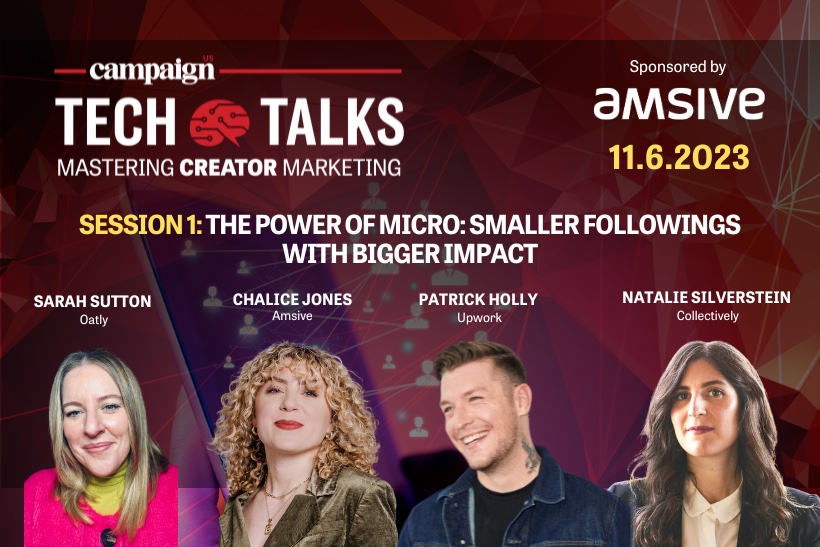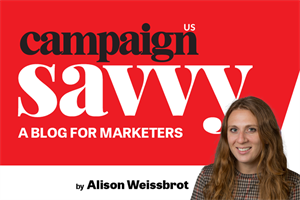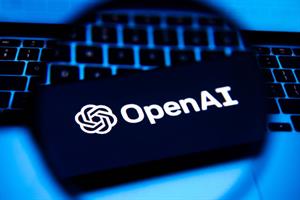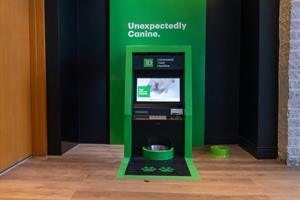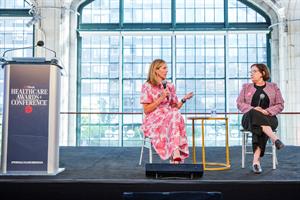Influencer marketing has evolved from one-off celebrity endorsements to ongoing campaigns driven by creators with dedicated and loyal followings. As consumer attention continues to shift to digital platforms, influencer and creator marketing have become critical to the success of brands large and small.
During a recent Campaign US Tech Talk, editor-in-chief Alison Weissbrot moderated a discussion between Patrick Holly, VP of creative at Upwork; Chalice Jones, director of social media and influencer at Amsive; Natalie Silverstein, innovation lead at Collectively; and Sarah Sutton, global media director of Oatly; about the challenges and opportunities of adding micro influencers to your playbook.
Finding connection
Working with creators with smaller followings on new platforms such as TikTok has the potential for rapid virality.
“Platforms are algorithmically driven, which essentially means that anyone can see your content versus just your followers,” Silverstein explained. “There’s a real opportunity for people on the creator side to make truly entertaining content and actually start to grow quickly.”
Brands can tap into niche communities across categories through micro-influencers. “We can get as specific or as broad as we need to,” Jones said. “Influencer partnerships and marketing is about that authenticity, it’s about that entertainment, it’s about connecting with people in a different way, in this very relational way.”
Upwork has found that “using smaller influencers, as opposed to larger ones, allows for the more personal connections between followers and creators,” Holly said. “If we’re able to have somebody talking about their own journey through freelancing or in starting up a business, it feels more worthwhile for us to interact with the smaller influencers as opposed to a larger one who might be more followed but [is] less relatable.”
Working with micro-influencers takes the pressure off to find the perfect content creator, Sutton noted. “We get this ability to tap into what we call truly unique and weird and a little bit out there, because you can drill right into all of those fabulous little niches that exist.” With a larger budget and bigger influencer, “there has to be much more connection between what we're trying to deliver on a campaign objective front,” she added.
Scaling impact
It’s essential to nurture a broad network of creators in this new era. “Creator relations is the new public relations,” Silverstein said. “Thinking strategically about outreach regularly, bringing them in on certain opportunities to weigh in on some choices that you’re making about your campaigns or products, making them feel like they are a part of the brand is something that is paying off over time with that more organic, unpaid advocacy for your brand.”
“Authenticity at scale is what influencers allow you to do, speak on behalf of the brand in that authentic way, in a way that’s getting larger,” Jones added.
Instead of maneuvering through the reach and awareness of one big celebrity or influencer, a brand can manage a larger network of hundreds or thousands of influencers to achieve scale. Upwork created “as simple a brief as possible, that allows each influencer to have their own unique spin and obviously put their stamp on it that their audience is looking for, but still gives us that one thing we’re looking for,” Holly said.
To oversee the creators, Oatly has moved from internal handling to a hybrid model with an in-house dashboard and externally managed service, Sutton said. “The next step is to make sure we’re building some ambassador programs so people can join in and we can start to vet them in a much easier way.”
Vetting of the metrics as well as the quality and authenticity of the audience is critical, Jones said. “It's a little bit of a boots-on-the-ground effort as well to make sure that we are checking these people up against what the standards are for our brands and our clients.”
Vetting at scale can definitely be a challenge. “It’s something that no amount of technology can give you, it can give you a safety net but it can't be the be-all-and-end-all,” Sutton said. “We have to be mindful about previous partners that some of our influences have worked with for fear of being called out, for being inconsistent or greenwashing, inauthentic.”
Managing partnerships
In an evolving, often fraught social media landscape, clients expect agencies to “quickly let them know about any conversations that are happening, sharing both stories as well as feed posts on multiple channels for all the creators that have been contracted for work and watching the comments, looking at the tenor of the conversation,” Silverstein said. “A trusted agency or staff partnership is critical to be able to do that and make a call if we’re going to ask this creator not to post, but we’re going to do it in a way that respects them and we still pay them, we keep it as noncontroversial as possible.”
Explicit contracts can also help. However, the reality is “you can’t gauge everybody’s personality and what they’re going to need or what’s going to make them upset, and [a creator] is speaking on behalf of a brand,” Jones said. “The last thing you want to do is kick something up and cause somebody to have a negative experience with you and then go to the internet and speak on behalf of your brand.”
The key is to be clear about what a brand stands for and is supposed to be talking about, Holly said.
To mitigate risk, Oatly seeks influencers who “have such a strong foundation with their audience, that their audiences are going to protect them and rally around them, because they’re making choices that are right for them and the channel and the content that they’re putting out,” Sutton said.
As brands try to reach different audiences through diverse influencers, it’s important to compensate creators equally. “We have a very consistent rate card that we use to ensure that there isn’t this dramatic discrepancy between what people are being paid for what work they’re doing,” Silverstein said.
“We allow enough time in the recruitment process to have conversations with the influencers to make sure that everybody feels really comfortable,” Jones explained. “It is a two-way street and we have to be willing to bend just as much as we’d want to flex.”



